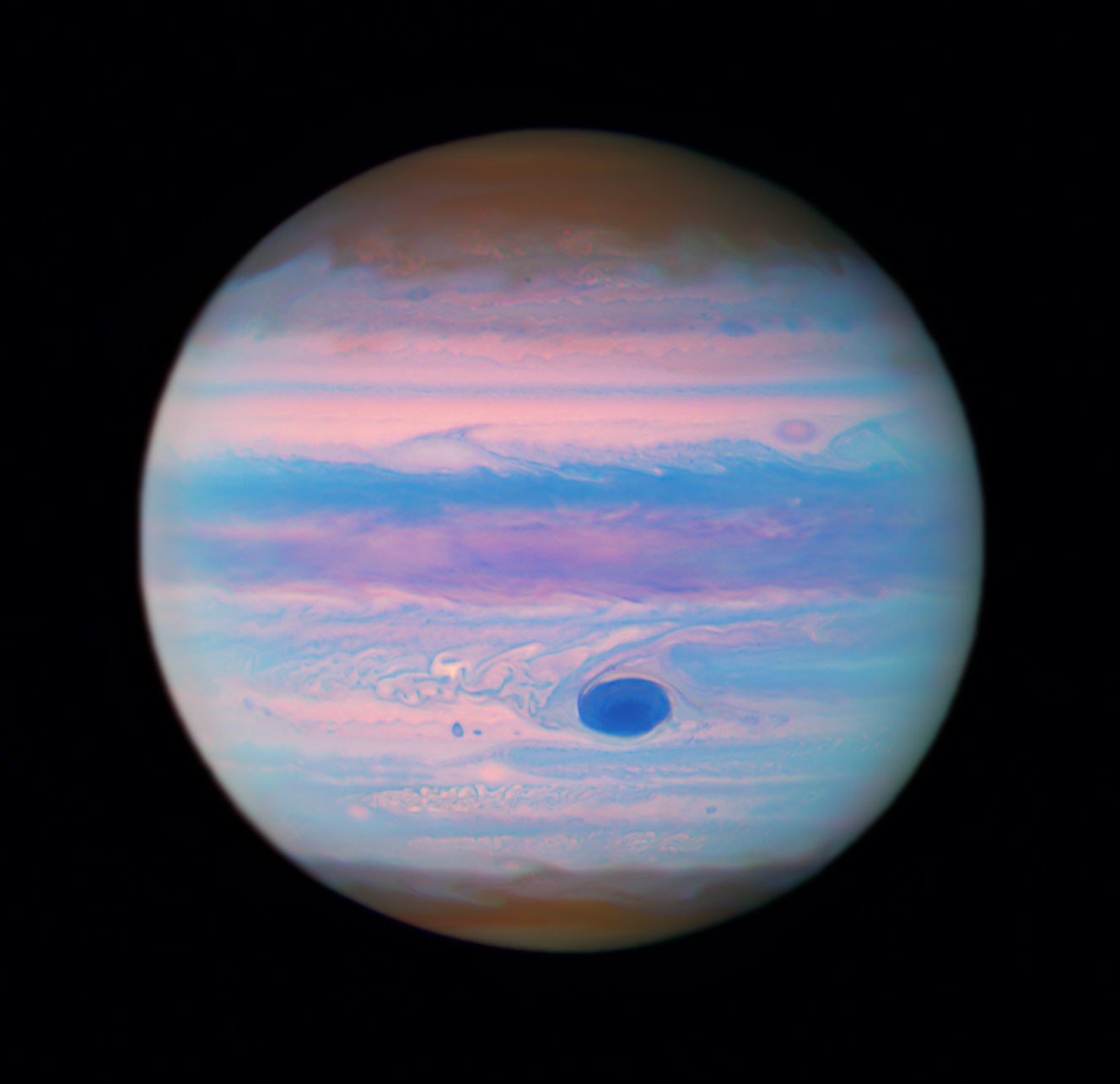
Hubble Provides Unique Ultraviolet View of Jupiter
This image from the NASA Hubble Space Telescope shows the planet Jupiter in a color composite of ultraviolet wavelengths. Released in honor of Jupiter reaching opposition, which occurs when the planet and the Sun are in opposite sides of the sky, this view of the gas giant planet includes the iconic, massive storm called the “Great Red Spot.” Though the storm appears red to the human eye, in this ultraviolet image it appears dark blue because high altitude haze particles absorb light at these wavelengths . The reddish, wavy polar hazes are absorbing slightly less of this light due to differences in either particle size, composition, or altitude. These ultraviolet observations were taken as part of Hubble’s Outer Planets Atmospheres Legacy program (OPAL) in 2022. Hubble's decades-long career and unique vantage point provide astronomers with valuable data that tracks changes in the outer planets’ storms, winds, and clouds. Information from the OPAL program can also extend far beyond our own solar system, helping us study the atmospheres of exoplanets that orbit stars other than our Sun. Hubble’s ultraviolet-observing capabilities allow astronomers to study the short, high-energy wavelengths of light beyond what the human eye can see. Ultraviolet light reveals fascinating cosmic phenomena, including light from the hottest and youngest stars embedded in local galaxies; the composition, densities, and temperatures of the material between stars; and the evolution of galaxies.
- X




























